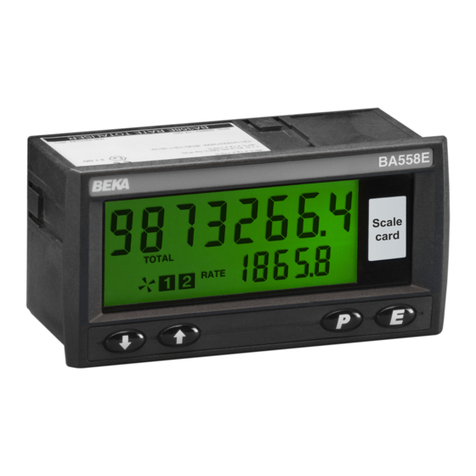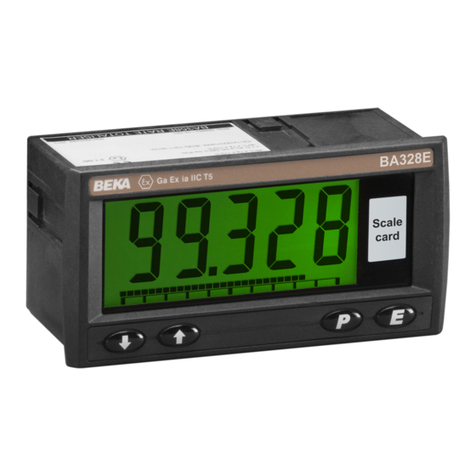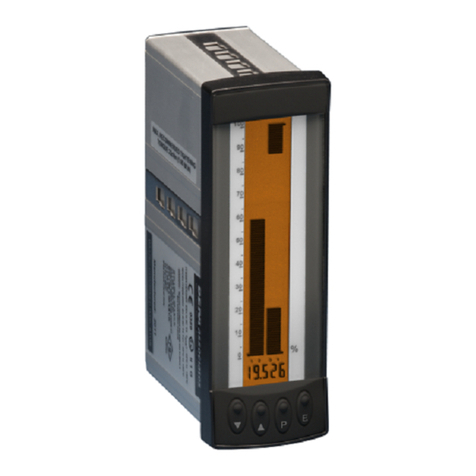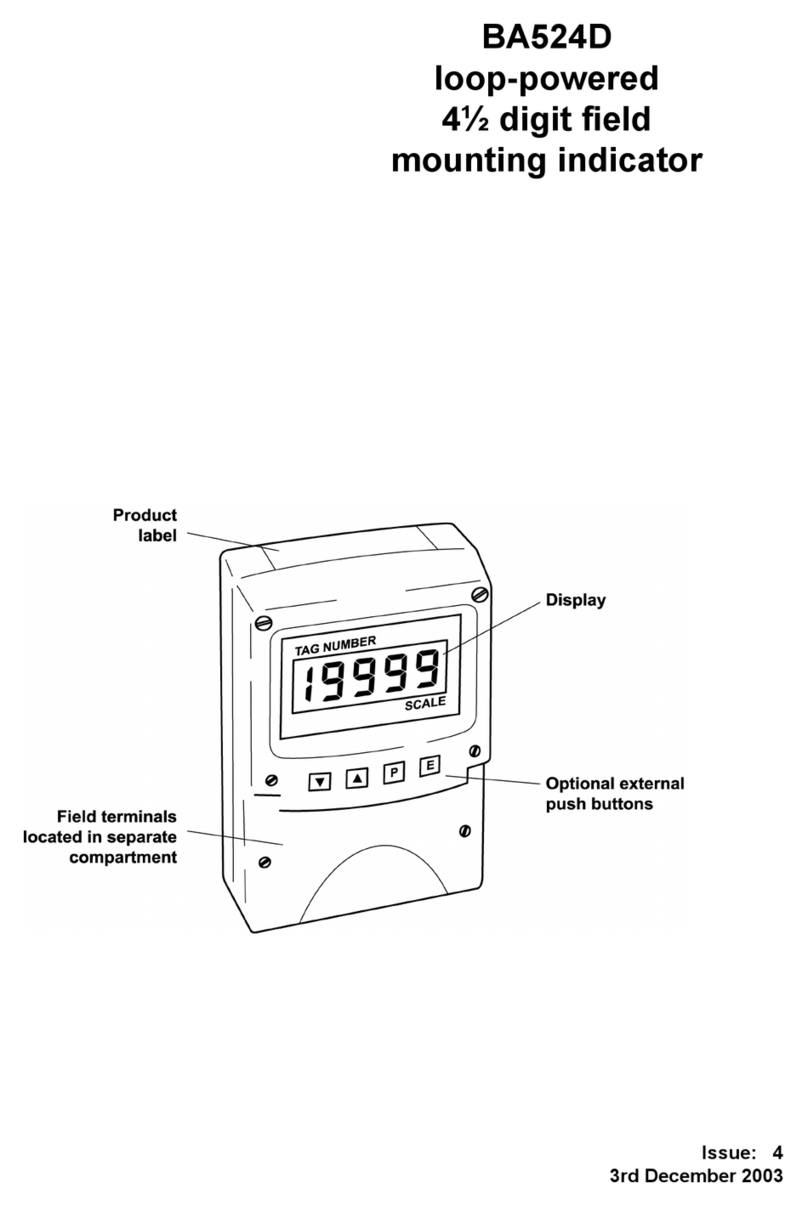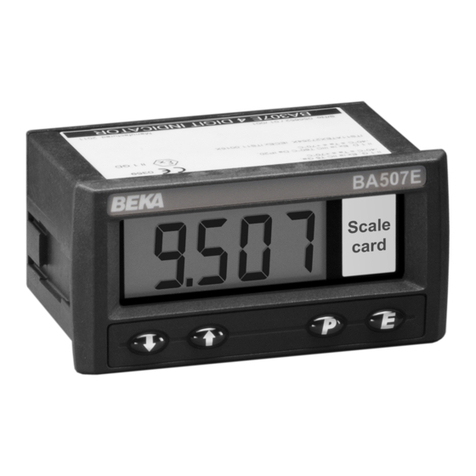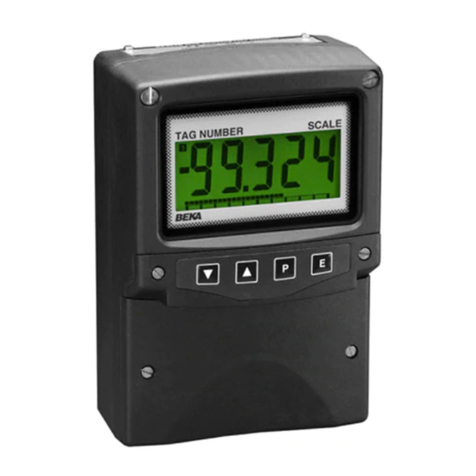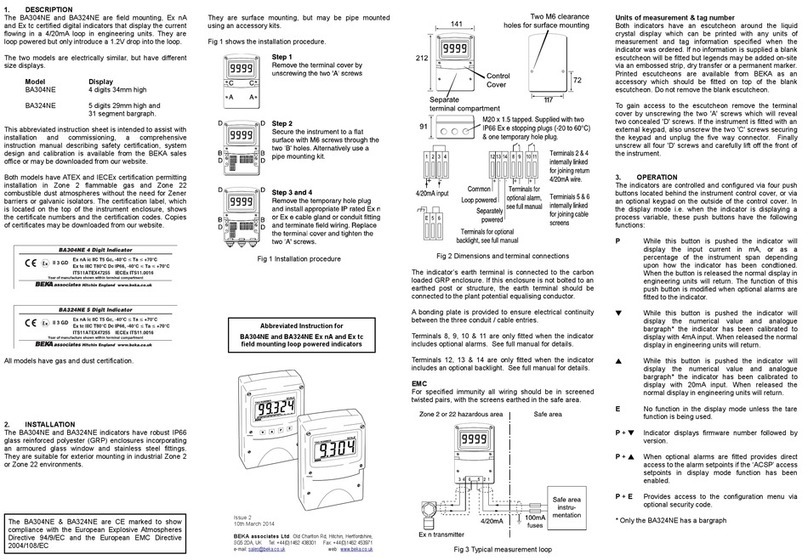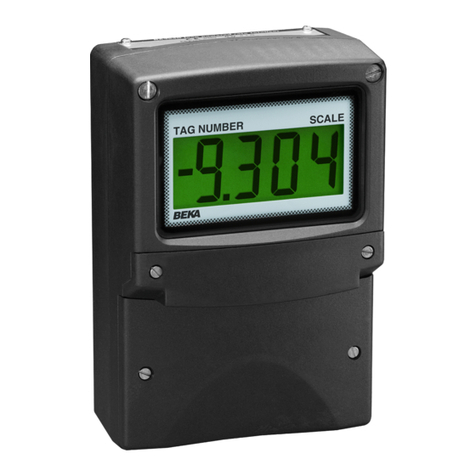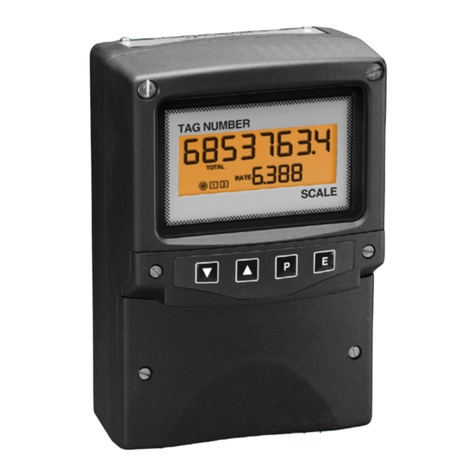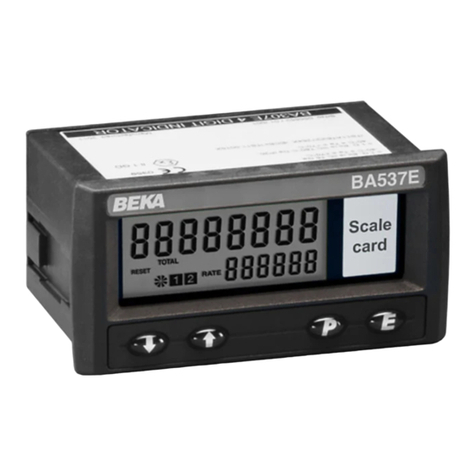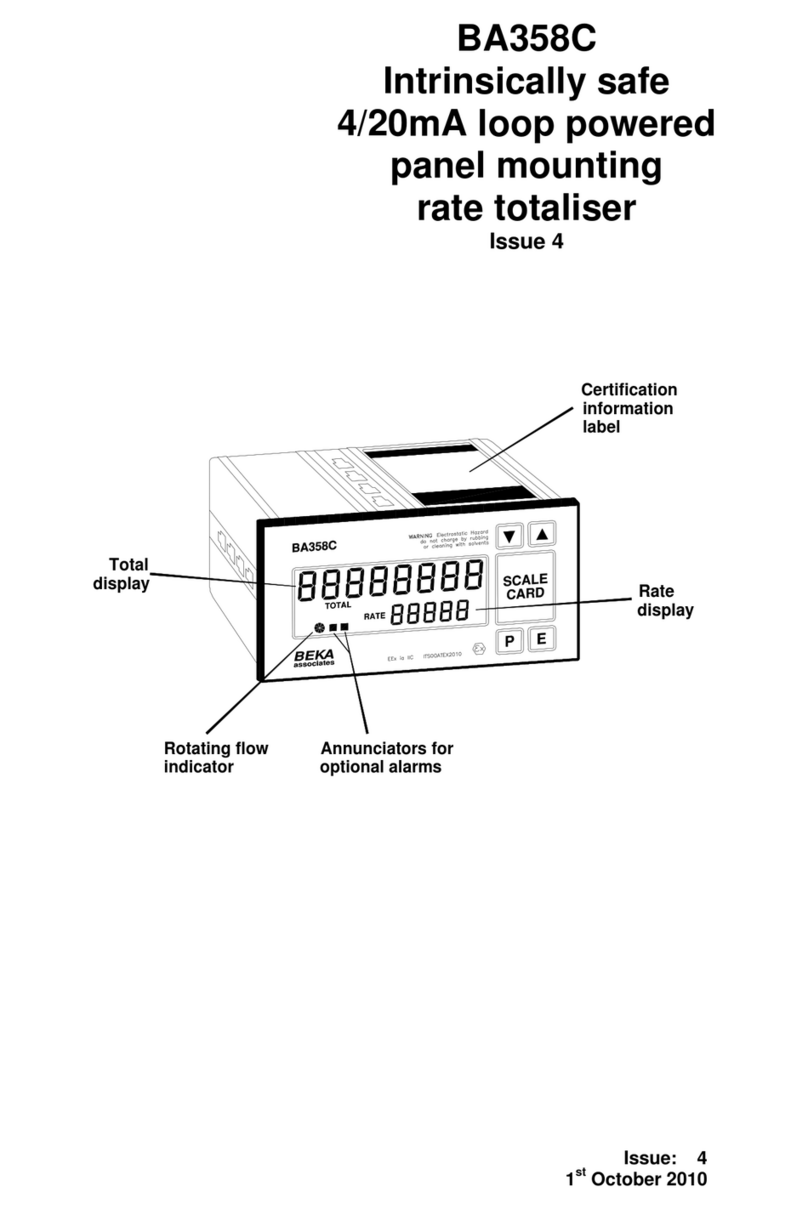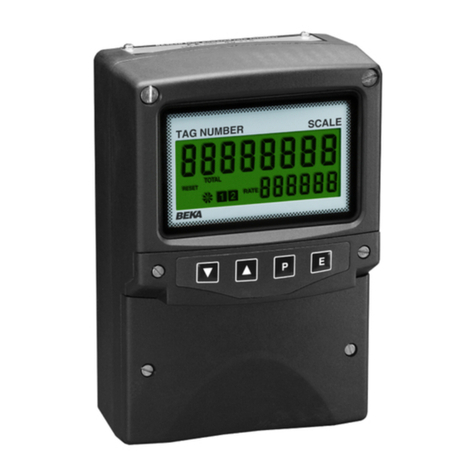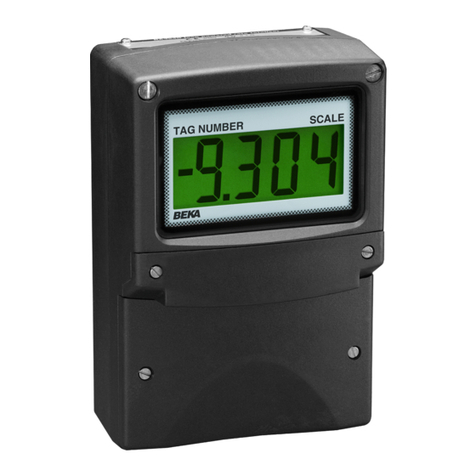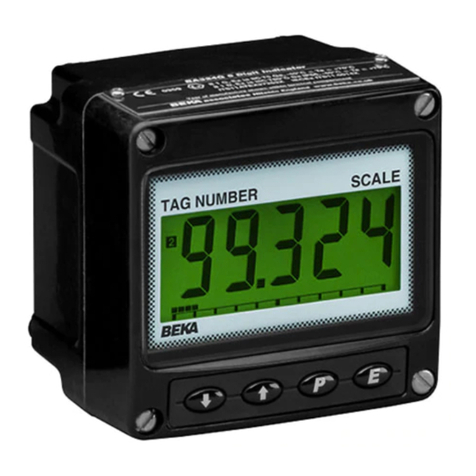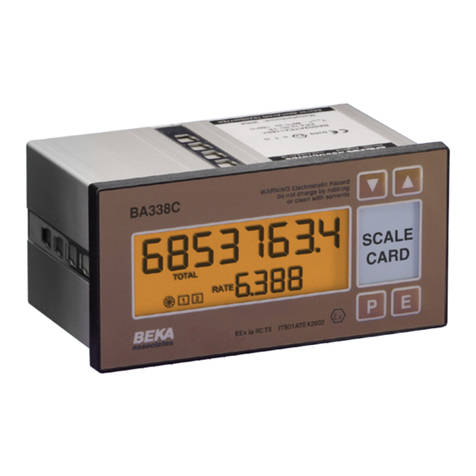
4
Full Description of Switch Functions
PWhile this button is pushed the rate
display will show the input current in mA,
or as a percentage of the instrument
span depending upon how the instrument
has been programmed. When the button
is released the normal display in
engineering units will return. The function
of this push-button may be modified
when alarms are fitted to the instrument.
Down While this button is pushed the
instrument will show the calibrated rate
display with 4mA input - usually zero for
flow applications. When the button is
released the flow rate will again be
displayed.
Up While this button is pushed the
instrument will show the calibrated rate
display with 20mA input. When the
button is released the flow rate will again
be displayed.
EWhile these buttons are pushed the
+Down total display will show the least significant
eight digits of the grand total, and the
grand total annunciator will be activated.
E+Up While these two buttons are pushed the
total display will show the most significant
eight digits of the grand total and the
grand total annunciator will be activated.
Down Resets the tota l display to zero
+Up when these two push-buttons are
operated simultaneously.
Selectable function from programme
menu.
See section 6.15
2.2 Displays
The BA354ND has two digital displays and
associated annunciators, plus a flow indicator as
shown on page 1.
Rate Shows the flow rate on the smaller
Display five digit display.
Total Shows the total flow since the
display instrument was last reset on the larger
eight digit display.
Flow This disc in the lower left hand corner
indicator of the display 'rotates' when the input
current exceeds 4mA.
3. TYPE ‘n’ CERTIFICATION
3.1 Certificate of Conformity
ITS Testing and Certification Ltd. (Formerly ERA
Technology Ltd) have issued a Certificate of
Conformity Ex00Y4017 confirming that the
BA354ND complies with the CENELEC standard.
3.2 ATEX certification
The BA354ND complies with the European ATEX
Directive 94/9/EC for Group II, Category 3G
equipment. It has been assessed using the
‘Internal Control of Production procedure specified
in Annex 8 of the Directive. A technical dossier
has been prepared and an EC Declaration of
Conformity BEKA01ATEX0011 has been issued.
The instrument bears the Community Mark and,
subject to local codes of practice, may be installed
in any of the EU member countries, i.e. Austria,
Belgium, Denmark, Finland, France, Germany,
Greece Ireland, Italy, Luxembourg, The
Netherlands, Portugal, Spain, Sweden and the
United Kingdom. ATEX certificates are also
accepted in Norway, Iceland, Liechtenstein and in
Switzerland.
This manual describes installations that comply
with BS EN60079: Part 14 Electrical Installation in
Hazardous Areas. When designing systems for
installation outside the UK, the local Code of
Practice should be consulted.
3.3 Input terminals
Input terminals 1 and 3 may be safely connected in
series with any 4/20mA loop providing that in
normal operation the input current to the
instrument does not exceed 30mA dc.
3.4 Reset terminals
The BA354ND total display may be reset to zero
by connecting a switch between reset terminals
RS1 and RS2. The switch may be located in Zone
2 or in the safe area. The only certification
requirements are that the switch and associated
wiring be able to withstand a 500V rms insulation
test to earth.
